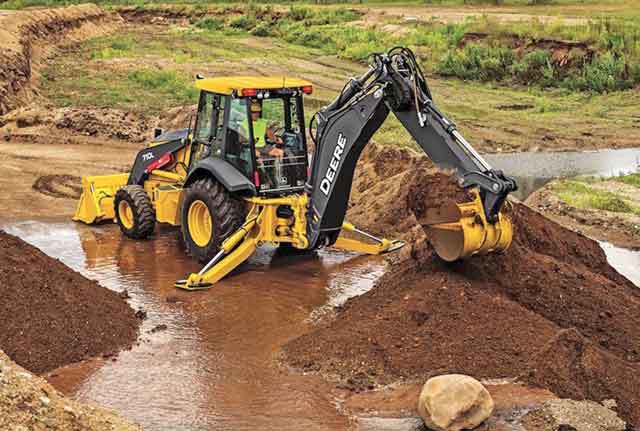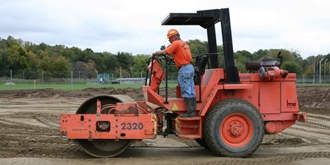Revealing the Art of Excavation: Pro Tips for Safe and Efficient Excavating
As soil is transformed and planet is moved, the ins and outs of excavation disclose themselves, requiring an eager understanding of devices, soil structure, safety and security methods, and ecological considerations. The know-how needed to browse these elements effectively can imply the distinction in between a successful excavation task and a potential disaster.
Importance of Proper Tools
To guarantee the safety and security and effectiveness of any type of excavation job, making use of the suitable devices is vital. The right devices not just improve efficiency yet likewise alleviate risks related to digging. Excavation tasks vary in scope and intricacy, varying from small domestic landscape design tasks to large building and construction endeavors. No matter of the job size, having the appropriate devices can make a significant distinction in the result.
Excavators are essential pieces of equipment in any kind of digging procedure. These functional devices come in numerous dimensions to fit various task requirements. Miniature excavators are ideal for smaller sized tasks, while bigger excavators deal with much more extensive tasks effectively. Backhoes are one more important devices type, incorporating the features of a loader and an excavator in one machine. They are valuable for jobs needing flexibility and ability to move.
Excavators excel in tasks that need pushing large quantities of dirt or particles. By investing in the appropriate equipment, excavation tasks can be finished safely, on time, and with precision.
Comprehending Soil Structure
A thorough grasp of soil make-up is basic for carrying out excavation projects with accuracy and safety and security. Comprehending the various kinds of soil is critical as it directly impacts excavation techniques, tools option, and overall task performance. Soil composition generally contains 4 main components: sand, silt, clay, and raw material. Each part has unique buildings that influence just how dirt responds to excavation procedures.
Sand bits are the largest and offer great water drainage however supply little communication. Silt bits are smaller than sand but bigger than clay, providing moderate drainage and communication. Clay bits are the smallest and give high communication but poor water drainage. Raw material, such as rotting plant product, impacts dirt fertility and stability.
Before beginning excavation, conducting dirt tests to determine its make-up and attributes is vital. This details aids in choosing the ideal tools, carrying out precaution, and developing excavation techniques customized to the particular dirt conditions - dump truck companies in ohio. By understanding dirt composition, excavation specialists can improve job results while making sure safety and adherence to finest techniques
Security Actions and Protocols
Comprehending dirt make-up is the foundation upon which safety and security steps and methods for excavation projects are developed, ensuring the well-being of employees and the success of the undertaking. When it concerns security throughout excavation, there are a number of crucial procedures that need to be applied to reduce risks and prevent accidents.
Primarily, prior to any type of excavating starts, a comprehensive evaluation of the website must be carried out to determine any type of potential dangers such as underground utilities, unpredictable soil conditions, or nearby frameworks that can posture a threat. It is crucial published here to have a proficient individual look after the excavation procedure to ensure that all security procedures are adhered to purely.
Additionally, all employees entailed in the excavation must be effectively learnt risk-free excavating methods and the correct operation of tools. Personal protective tools (PPE) such as hard hats, high presence garments, gloves, and safety boots ought to be worn whatsoever times to reduce the risk of injuries. lancaster trenching. Normal safety meetings and tool kit talks should likewise be performed to maintain all employees notified about possible hazards and reinforce safe work methods. By sticking to these precaution and methods, excavation tasks can be completed efficiently and without incident.
Reliable Excavation Preparation
When starting an excavation task, meticulous planning is necessary to ensure efficiency, safety, and effective end results. Reliable excavation preparation involves several crucial steps that are crucial for the smooth execution of the project. The initial step is to perform a complete website evaluation to identify any kind of potential dangers, such as underground energies or unpredictable soil problems. This details is crucial for developing a detailed excavation strategy that includes precaution and take the chance of mitigation approaches.
As soon as the site analysis is total, the next action is to create a clear timeline and schedule for the excavation tasks. This includes determining the sequence of tasks, equipment needs, and workforce allotment. Correct scheduling assists prevent delays and guarantees that the project stays on track.

Furthermore, communication among all employee is vital throughout the planning phase. Clear directives, regular updates, and reliable control website link are important for a successful excavation job. By spending time and initiative in precise preparation, excavation teams can dramatically boost productivity, reduce dangers, and accomplish effective end results.

Managing Environmental Factors To Consider
With raising emphasis on ecological sustainability in construction practices, managing environmental considerations has come to be a crucial facet of excavation tasks. Excavation activities have the possible to impact the surrounding atmosphere via dirt disintegration, debris overflow, environment interruption, and contamination of water resources. To reduce these dangers, it is vital to carry out finest practices that focus on ecological protection.

Moreover, appropriate waste management is critical to avoid soil and water contamination. Carrying out procedures for the disposal of unsafe materials, recycling of waste materials, and minimizing making use of hazardous chemicals can dramatically minimize the ecological effect of excavation tasks. By integrating these practices right into excavation planning and implementation, construction companies can make sure that their projects are not just risk-free and productive but likewise environmentally liable.
Conclusion
In verdict, understanding the art of excavation requires a complete understanding of appropriate equipment, soil composition, security measures, and efficient preparation. By adhering to these standards and thinking about environmental elements, excavations can be performed safely and successfully. It is important to focus on safety and productivity in every excavating task to make sure effective end results.
As soil is transformed and planet is moved, the details of excavation reveal themselves, demanding an eager understanding of tools, dirt structure, safety and see security methods, and ecological factors to consider.To ensure the security and effectiveness of any kind of excavation task, using the proper tools is extremely important.An extensive understanding of dirt structure is basic for executing excavation jobs with precision and security. Comprehending the various types of soil is important as it straight impacts excavation techniques, devices option, and total task performance. By comprehending dirt composition, excavation specialists can boost task end results while making sure safety and adherence to ideal techniques.